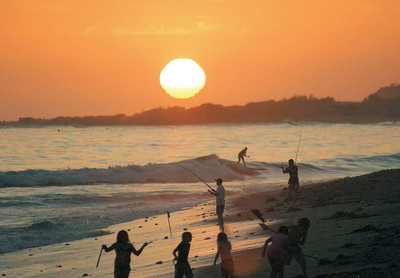
The decades-long debate over a toll road that would connect an Orange County highway to the Interstate 5 by cutting through San Onofre Beach State Park took a new turn this month.
The California Coastal Commission denied the 16-mile road extension because it violates state laws enacted to protect the coast from overdevelopment, said Mark Delaplaine, Coastal Commission staff manager.
Representatives of the Surfrider Foundation, one of the groups opposed to the construction, say the road would ruin one of Southern California’s last undeveloped watersheds in exchange for an easier commute on the Interstate 5 and connecting roads.
There is also fear that the project could affect wave formation at Trestles Beach near the mouth of San Mateo Creek, a spot known for good waves among local surfers.
“There were a very large number of effects,” Delaplaine said, “effects on the habitat, the state park, surfing, water quality, wetlands, campground [and] archeological resources.”
The project would also affect the habitat of the endangered Pacific pocket mouse, according to a staff report.
The commission rejected the project Wednesday, Feb. 6, at a meeting attended by about 3,000 people at the Del Mar Fair Grounds, according to reports.
The commission’s decision, however, isn’t the last on the issue, he said.
The Transportation Corridor Agencies, based in Orange County, appealed the commission’s decision to the U.S. Secretary of Commerce, who can overturn the commission’s decision, he said. In the meantime, the TCA is working to get several other building permits from other agencies, officials said.
The proposed toll road would connect the end of the current Toll Road 241 at Oso Parkway in Rancho Santa Margarita, Orange County, to the I-5 at Camp Pendleton. TCA Spokeswoman Jennifer Seaton said that the road would relieve traffic congestion along the I-5, adding that its construction would provide about 20,000 jobs over the next five years.
A team of agencies, including the U.S. Fish and Wildlife Service, the Environmental Protection Agency, the Army Corps of Engineers and Federal Highway Administration, among others, settled on the proposed route through the park because it relieves the most traffic congestion while affecting the fewest businesses and homes in the region, she said.
“The main benefit is for commuters,” she said. “If the [interstate] 5 is shut [down], there’s no alternate route. If 241 was finished it would provide an alternate route,”
The road could cost the TCA about $1 billion, she said. That’s money the TCA wants to recover through tolls over the next 30 to 40 years before completely handing the road over to the state as a freeway, she said. The project is the last stretch of highway that would complete more than 51 miles of toll road that’s been in the works since the early 1980s, she said.
But Stefanie Sekich, coordinator of the Save Trestles campaign for the Surfrider Foundation, said the road would set a terrible precedent for building roads through state parks.
“[It’s] open space that we just don’t have anymore in Southern California. And we have to protect these cultural, recreational resources for future generations,” she said.
Sekich said a coalition of groups opposed to the road, including the Surfrider Foundation, have filed a lawsuit against the TCA for violating the California Environmental Quality Act regulations. The case has yet to go to court, according to TCA officials.
Eric “Bird” Huffman, owner of South Coast Windandsea Surf Shop, said he doesn’t want to see the quality of waves at Trestles ruined by development. He said other good surf spots at Dana Point and others in Ocean Beach have been affected by development in the past.
The waves at Trestles result from the unique shape of the shoreline bottom made from cobblestones and sediment that have been washed up to the shoreline over decades, Huffman said.








